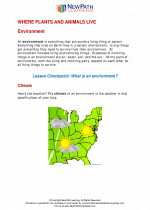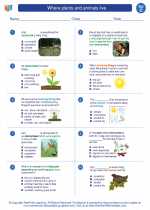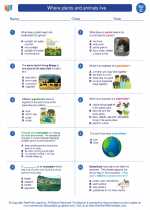Flowers
Flowers are the reproductive structures found in flowering plants, also known as angiosperms. They are essential for the plant's reproductive process and come in a wide variety of shapes, sizes, and colors.
Structure of a Flower
A typical flower consists of several parts:
- Petal: The colorful, often scented part of the flower that attracts pollinators.
- Stamen: The male reproductive organ of the flower, consisting of the anther and filament.
- Carpel: The female reproductive organ of the flower, consisting of the stigma, style, and ovary.
- Sepal: The outermost part of the flower, usually green in color, and protects the flower during its bud stage.
Functions of Flowers
Flowers serve several important functions:
- Reproduction: Flowers are the site of sexual reproduction in plants, where pollen is transferred from the stamen to the carpel for fertilization.
- Pollination: Pollinators such as bees, butterflies, and birds are attracted to flowers by their colors and scents, and unwittingly aid in the transfer of pollen.
- Seed Formation: After fertilization, the ovary of the flower develops into a fruit containing seeds, ensuring the continuation of the plant species.
Types of Flowers
There are various types of flowers based on their structure and reproductive mechanisms:
- Complete Flowers: These flowers contain all four main parts - petals, stamens, carpels, and sepals.
- Incomplete Flowers: Flowers lacking one or more of the main parts, either stamens, carpels, or petals.
- Perfect Flowers: Flowers containing both stamens and carpels, capable of self-pollination.
- Imperfect Flowers: Flowers with either stamens or carpels, requiring cross-pollination from other flowers of the same species.
Fun Facts about Flowers
Here are some interesting facts about flowers:
- Largest Flower: The Rafflesia arnoldii, also known as the "corpse flower," is the world's largest flower and can grow up to 3 feet in diameter.
- Oldest Flower: The Montsechia vidalii, a water lily, is believed to be the world's oldest flower, dating back over 130 million years.
- Flower Symbolism: Different flowers hold symbolic meanings, such as roses representing love and daisies symbolizing innocence.
Study Guide
Here are some key points to remember about flowers:
- Define the main parts of a flower and their functions.
- Explain the process of pollination and its importance for plant reproduction.
- Identify the types of flowers based on their structure and reproductive mechanisms.
- Discuss the role of flowers in the formation of fruits and seeds.
- Explore the significance of flowers in different cultures and traditions.
Remember to observe and appreciate the beauty and diversity of flowers in nature!
[Flowers] Related Worksheets and Study Guides:
.◂Science Worksheets and Study Guides Third Grade. Where plants and animals live
Study Guide Where plants and animals live
Where plants and animals live  Worksheet/Answer key
Worksheet/Answer key Where plants and animals live
Where plants and animals live  Worksheet/Answer key
Worksheet/Answer key Where plants and animals live
Where plants and animals live  Worksheet/Answer key
Worksheet/Answer key Where plants and animals live
Where plants and animals live  Vocabulary/Answer key
Vocabulary/Answer key Where plants and animals live
Where plants and animals live  Vocabulary/Answer key
Vocabulary/Answer key Where plants and animals live
Where plants and animals live 

 Worksheet/Answer key
Worksheet/Answer key
 Worksheet/Answer key
Worksheet/Answer key
 Worksheet/Answer key
Worksheet/Answer key
 Vocabulary/Answer key
Vocabulary/Answer key
 Vocabulary/Answer key
Vocabulary/Answer key

The resources above cover the following skills:
LIFE SCIENCE
Unity and Diversity
Construct an argument from evidence to explain the likelihood of an organism’s ability to survive when compared to the resources in a certain habitat (e.g., freshwater organisms survive well, less well, or not at all in saltwater; desert organisms survive well, less well, or not at all in woodlands).
Create models that illustrate how organisms and their habitats make up a system in which the parts depend on each other.